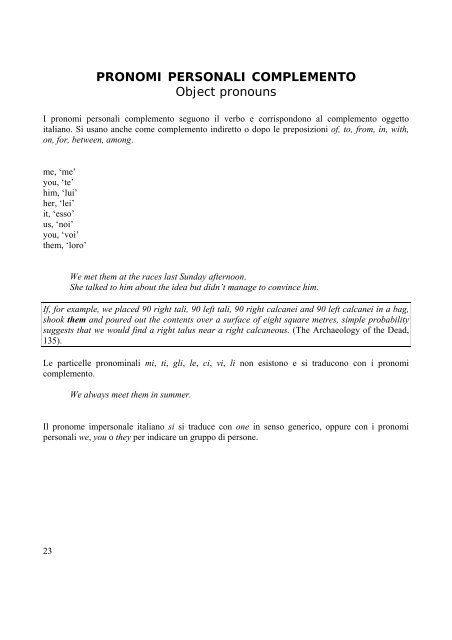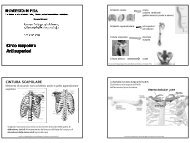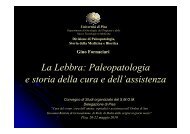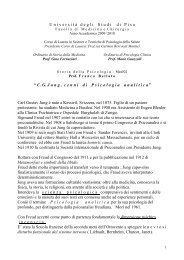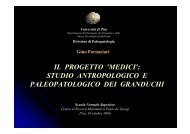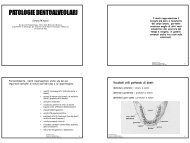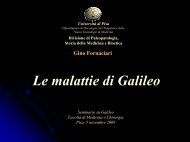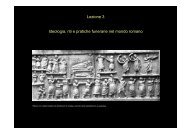Fondamenti della lingua inglese Laura Cignoni - Paleopatologia
Fondamenti della lingua inglese Laura Cignoni - Paleopatologia
Fondamenti della lingua inglese Laura Cignoni - Paleopatologia
You also want an ePaper? Increase the reach of your titles
YUMPU automatically turns print PDFs into web optimized ePapers that Google loves.
23<br />
PRONOMI PERSONALI COMPLEMENTO<br />
Object pronouns<br />
I pronomi personali complemento seguono il verbo e corrispondono al complemento oggetto<br />
italiano. Si usano anche come complemento indiretto o dopo le preposizioni of, to, from, in, with,<br />
on, for, between, among.<br />
me, ‘me’<br />
you, ‘te’<br />
him, ‘lui’<br />
her, ‘lei’<br />
it, ‘esso’<br />
us, ‘noi’<br />
you, ‘voi’<br />
them, ‘loro’<br />
We met them at the races last Sunday afternoon.<br />
She talked to him about the idea but didn’t manage to convince him.<br />
If, for example, we placed 90 right tali, 90 left tali, 90 right calcanei and 90 left calcanei in a bag,<br />
shook them and poured out the contents over a surface of eight square metres, simple probability<br />
suggests that we would find a right talus near a right calcaneous. (The Archaeology of the Dead,<br />
135).<br />
Le particelle pronominali mi, ti, gli, le, ci, vi, li non esistono e si traducono con i pronomi<br />
complemento.<br />
We always meet them in summer.<br />
Il pronome impersonale italiano si si traduce con one in senso generico, oppure con i pronomi<br />
personali we, you o they per indicare un gruppo di persone.


